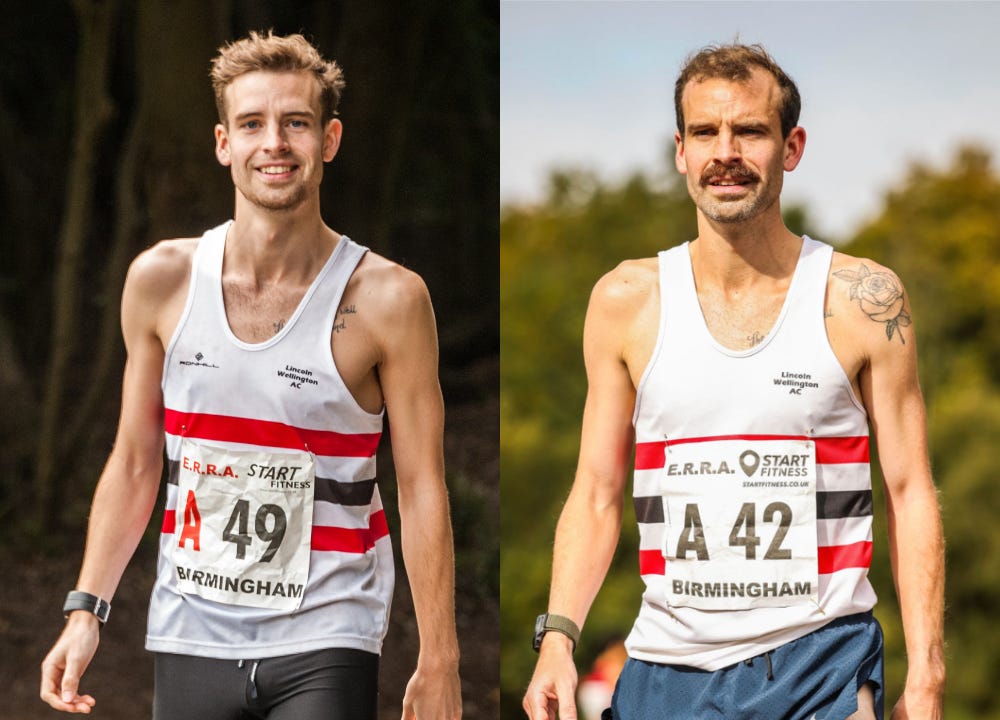Almost Any Plan Works (until it doesn’t)
…then it’s time to start losing.
There’s a truth about performance that rarely makes it into the reels: almost anything works… for a while.
Whether we’re talking about running programs, productivity systems, nutrition protocols, or corporate improvement initiatives, you can pick nearly any structured plan or system, follow it for six to eight weeks and you’ll probably see results. Consistency alone is powerful. When we apply focused effort to almost anything after a period of doing too little or doing it inconsistently, the body and mind adapt.
And then those same systems stop working and quietly fade into the background after a few months. But we don’t get to see that bit… And so all we’re exposed to is “miracle” transformations.
In sport science, we know that the first six to eight weeks of nearly any structured exercise program will produce measurable adaptation. Lift weights? You’ll gain strength. Start running? Your aerobic system responds. Start cycling? Your watts will increase. Track your habits? You’ll improve your focus. Restrict calories, you’ll lose excess weight. I can go on. And, probably, so could you.
What’s really happening is you’re providing your body with a clear signal: “adapt or fall behind”. The novelty, the accountability, and the consistency drive change. Regular stimuli for your body to deal with.
Yet, that initial adaptation isn’t proof that the plan or system is good. It’s proof that you stuck with something long enough for your body and mind to notice. After this first wave, progress starts to depend less on the plan itself and more on context and how well it’s adjusted and applied. Further progress starts rely more on individualisation and on feedback. Your capacity, stresses, recovery, enjoyment, and mental toughness.
And even for someone such as me who, at least professes to know exercise adaptation, with actual performance experience that began before YouTubers started ruining proper training processes and ‘Guru’s’ deceived millennials into believing they could ‘earn 6-figures with their simple 3-step process’, going back to basics after time off goes a long way.
I’m doing this now. I’ve spent the first 8-months of this year building back to a place where I’m confident my body is strong enough to train how I used to. And now? I’m 5-weeks deep into my ““Gimme 6-weeks and I’m good” phase. Don’t believe me? ASK ME MUM THEN! (Or follow my personal Substack where I’ll begin to write about my training weeks, and the context behind some of my decisions).
Be A Loser
Our online environments are full of people “winning”, posting screenshots, new personal bests, before-and-after photos, and short-term testimonials of what they’ve achieved working with Disco Dave after just 4-weeks.
You didn’t see Glen Mills posting “new client, excited to see his progress” with a screenshot, fire emojis scattered all over and Snoop Dog’s Drop It Like It’s Hot soundtracking when he started working with 18-year old Usain Bolt. Granted, it was 2005, YouTube was only just starting and Bebo and Myspace weren’t quite the marketing havens we’re used to on Instagram and TikTok, today (GenZ, you missed out)
Yes yes, broken record. Although I won’t stop playing it. Because whilst these narratives dominate our screens, and therefore our minds, SUSTAINABLE and HEALTHY performance will always be threatened.
We don’t see enough “losing” in contemporary media. At least when we watch live sport, we all get to experience someone winning, and someone losing. Even before the result. For example, anyone who watched The Ryder Cup would have experienced both of these incidences and the emotions involved. Yet afterwards we just see posts about Europe’s phenomenal win despite a hostile crowd and USA’s valiant attempt at a historic comeback. Where are the posts about Europe’s near catastrophe and USA’s failed comeback attempt?
OK, I know I’m a negative Nelly, but this isn’t about me being grumpy. Losing is important. NO ONE goes through life without loss. Losing brings us back to reality and reminds us to pause, take stock on what we are doing, and refine.
In exercise and performance, if you’re not reaching a point where losing is possible, or even inevitable, you’re probably not in the competition at all. For most of us, this starts after that initial 6-8 week honeymoon phase. In 2005 Usain Bolt finished last in the World Champs 200m final, pulling up with injury. If he’d changed coaches because he’d not got the result, or gone searching for the silver bullet to ‘fix’ his injury issues, who knows how history would now look.
Although, let’s not confuse ourselves, here. The initial period of time in which we make change is absolutely great. 8-week transformation plans and 12-week couch-to-10k plans are brilliant tools. They are responsible for capturing and captivating millions of people into health and fitness pursuits. How happy are we when we put so much effort into something and see an incredible reward?! We deserve that. Most exercise, health and wellbeing professionals that I personally know, deliver these things well, care about their clients, and regularly go onto work with their clients long-term.
However, amidst the increasing numbers of people taking part in physical activity, there is still a rising health crisis that is costing us greatly (discussed in more detail in my previous post). Where I’m interested, and where a lot of you readers will be, is in sustaining our pursuits. In understanding that challenge comes when our routines are threatened by life, or illness, or injury. In understanding that the world around us changes overtime just as much as our internal biology. And that warm fuzzy feeling inside can be repeated, it’s just not quite the fairytale ending every time - and that’s ok.
The Real Work Starts When Things Stop Working
Now that I’m in my final week of my typical “Gimme 6-weeks and I’m good” phase, I’ve managed to already see some great improvement, but also take stock of some of the losses. So, it’s likely in the next few weeks, I’m probably going to have to think more consciously than “Run at least 70 miles each week” and start addressing some nuance in order to drive specific adaptation and further progress.
For example, I’ve noticed basically no improvement in my first threshold (usually key to my fitness developing), and I’ve noticed my ability to repeatedly run closer to my VO2 max has improved considerably. So now is the time for me to get real, look at the feedback, get stubborn and dive into those components, whilst avoiding the mistakes I made that contributed to burnout and injury, previously. It’s also likely I’m going to get pretty frustrated, disappointed, and down about my performances within the current months. But, I know it’s not going to stop me because I’m fortunate enough to have experience of real work after things stop working.
And here’s the thing, often what we see happening isn’t as special as we think. I’ve done this many times over the last decade. I’ve seen peers do the same thing. And I’ve seen countless clients do the exact same thing. This weekend, I had a race that I have done many times. I ran well from the training I have done. I was on the first leg of a National Road Relay competition where I finished 49th. In 2016… I finished 50th with a similar relative speed. Of course, performance specifics are at play, yet the basics repeatedly yield similar results (despite a different hairline).
To summarise, almost any plan works for a while, the challenge of developing sustainable progress starts when the easy gains end. Losing isn’t failure; it’s feedback. It’s the point where adaptation, honesty, and real progress begin. Early success is easy; staying in the game when you start losing is what builds depth.
Losing well is what turns short-term wins into lasting performance. So here are some of my tips for losing well:
Notice the losses early - Don’t wait for a breakdown. Track when performance plateaus, energy dips, or enthusiasm fades as those are signals, not signs of weakness.
Reflect before reacting - When progress slows, resist the urge to swap plans or chase novelty. Ask yourself: What’s actually changing? The plan, or me? Often life load, recovery, or mindset are the real variables.
Adjust, don’t abandon - A good loss should inform tweaks, not total resets. Shift one variable at a time, for example volume, intensity, or frequency, and provide space and time to work.
Stay accountable when it’s uncomfortable - Most people are loud when they’re improving and quiet when they’re not. Keep showing up, logging sessions, and asking for feedback during the “losing” phases.
Reconnect to the bigger arc - Short-term dips often set up long-term breakthroughs. Losing well is about remembering that one bad week doesn’t define the trajectory.
Hope these help.
FNX 4 REEDIN’
Shane







